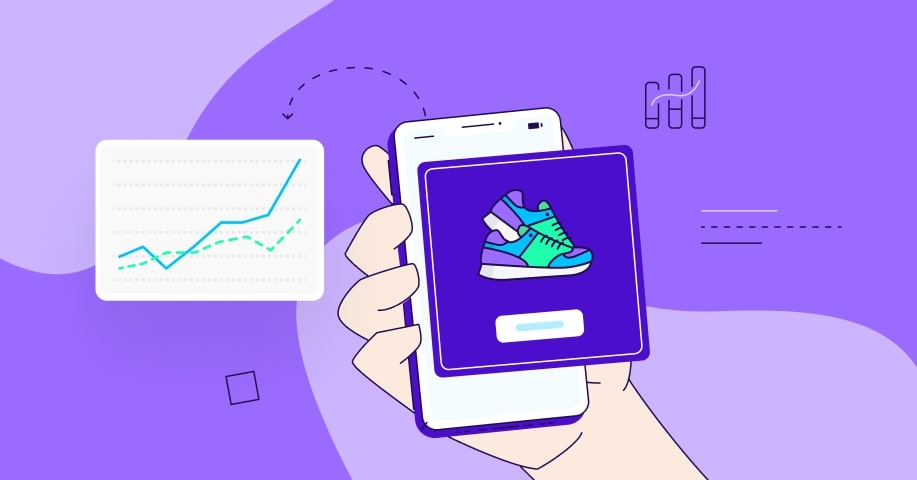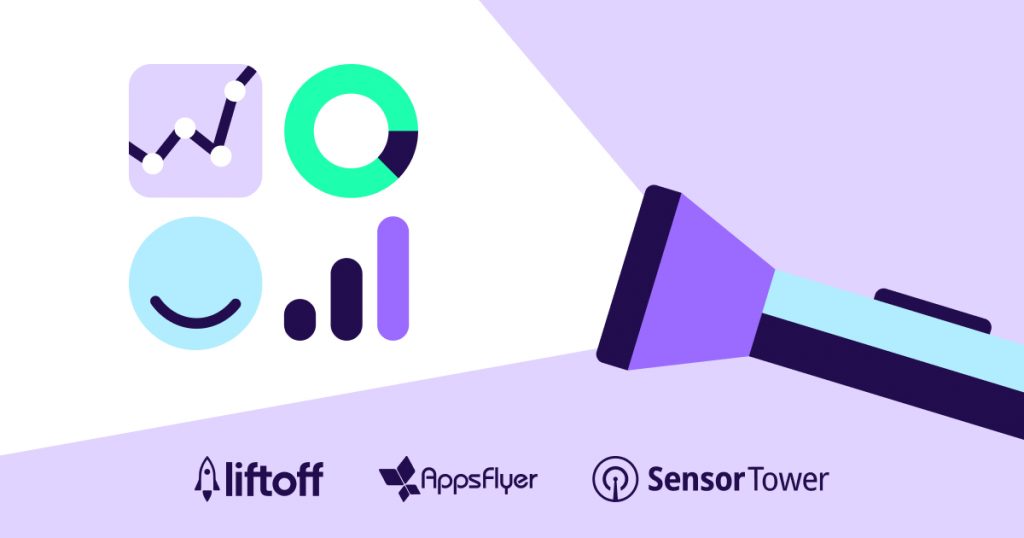
Introduction
$314.5 billion. That’s how much the worldwide in-app advertising (IAA) market is expected to generate in 2023 — and it’s predicted to grow by 10% year on year.
Why the boom? Well, in a world of free downloads, IAA has become a crucial revenue stream for mobile apps, particularly those in the gaming, social, and entertainment spaces.
What is in-app advertising?
In-app advertising is the display of paid ads within a mobile app.
It allows app owners to leverage their real estate by selling space to advertisers, while advertisers benefit by showing their ads to a relevant, engaged audience.
But with so many apps fighting for advertising dollars, it’s a crowded market — so how can you compete? It’s tempting to just show more ads, but that overexposure can do more harm than good. The key is to engage the user and enhance their experience, by serving the right ad, in the right way, at the right time.
The good news is, there’s a wide range of ad formats to choose from depending on your goals. Here are a few of them:
- Banner ads: great for raising brand awareness, and testing your creatives for user acquisition
- Video ads: ideal for storytelling and building engagement
- Rich media ads: similar to banners, but offer more scope for creativity and user interaction
- Native ads: good for engagement and building trust, as they match the look and feel of the user’s chosen platform
We’ll look at the different formats in more detail later in this guide, as well as exploring how in-app advertising works, different pricing models, and how you can make this revenue source work for you.

Chapter 1
The in-app ecosystem – how does it work?
There are a number of players within the mobile ecosystem, each with their own specific role. Let’s break it down.
On the buy side, we have:
- Advertisers: these are the app developers, agencies, or brands that buy the ad space.
- Ad exchanges: these work like a stock exchange, enabling advertisers to pick their desired audiences and bid on them.
- Demand-side platforms (DSPs): these allow advertisers to access the inventory of multiple ad exchanges.
On the sell side, you’ll find:
- Publishers: these are the apps selling ad space.
- Supply-side platforms (SSPs): these allow publishers to place the ads in front of their selected audience.
Ad networks sit in the middle, acting as the broker that sells publisher ad space (known as in-app inventory) to advertisers.
In addition, you’ll find mobile Measurement Partners (MMPs), like AppsFlyer: these are an independent part of the ecosystem (neither buy nor sell side) that help advertisers measure which ad networks are delivering their most valuable users.
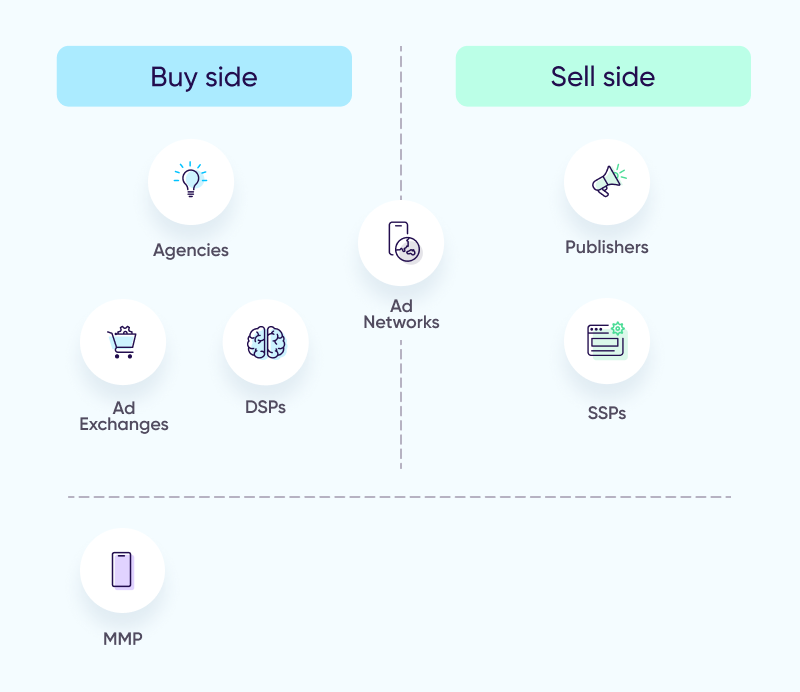
The process
Here’s a brief summary of how they all work together:
- The app wishing to display an ad makes a request to the ad network, which uses advanced algorithms to identify the highest paying advertisers.
- Advertisers use the ad exchange to bid on their desired audience.
- The ad is displayed to the audience in real time.
- User actions are reported back to the advertiser. The advertiser gets paid accordingly and can optimize for future campaigns.

Chapter 2
In-app advertising benefits (and challenges)
Research in 2022 showed that mobile users in major markets spend four to five hours a day in apps — that’s clearly a huge opportunity for advertisers.
But is it too good to be true? Let’s explore the pros and cons of IAA.
Here are some of the ways IAA can help you:
1. Build revenue
With well over 90% of apps in the main app stores now free to download, app owners are looking to either in-app advertising or its cousin, in-app purchasing (IAP), as a source of income.
IAP can be lucrative if you can implement a subscription model, but in gaming, for instance, purchases tend to be low-value, while the majority of users just want to play for free. In these apps, inserting ads between levels or during transitions can work well, generating engagement, impressions, and revenue without impacting user experience.
2. Boost user engagement
While the mobile ads of the past were garish and distracting, you now have a wealth of options to genuinely engage users, building both awareness and retention.
For starters, you can place the ad at just the right point, when the user is concentrating but not in the middle of a critical action. You can use precise targeting to ensure your ads are perfectly relevant. You can even explore gamification techniques — for example, offering rewards (such as in-game currency) for watching a video or playing on consecutive days.
3. Increase in-app purchase revenue
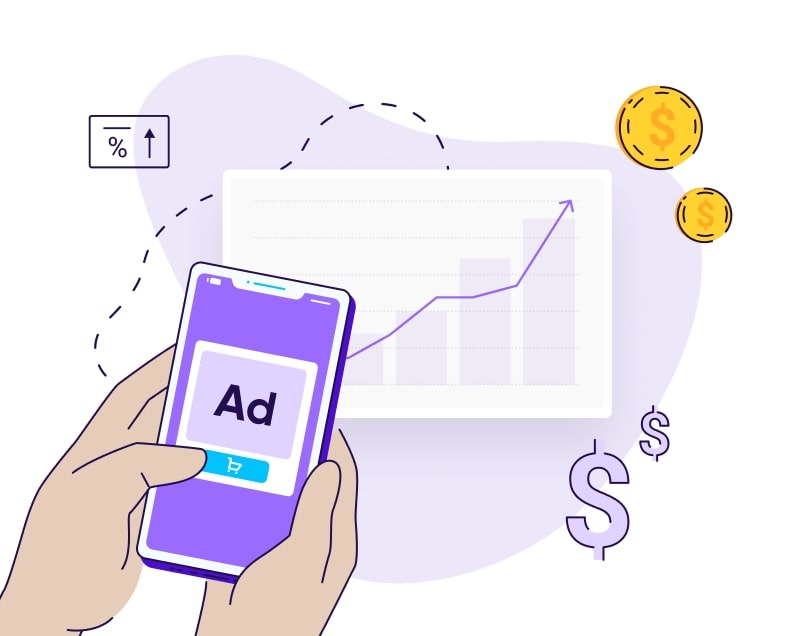
Earlier we described IAA and IAP as cousins, and it’s true that they’re closely linked. And if you can make them work hand in hand, you’re on to a winner.
We know that users who engage with in-app ads are more likely to make a purchase. What’s more, research from the gaming market shows that a hybrid model of IAA and IAP leads to higher revenues and lifetime value.
4. Reach your ideal audience
Think about it: people who’ve gone to the trouble of installing an app are already interested and engaged. Aligning ads with the demographics and interests of app users means you’re more likely to see results: in-app ads have more than twice the click-through rate of mobile web ads (0.54% vs 0.23%).
5. Improve user experience
You can choose when to display the ad and what format to use. Importantly, in-app ads are optimized for mobile, so they display perfectly for users — not always the case for web ads.
6. Track performance
For publishers, tracking the performance of in-app ads is easier than those on mobile sites, as they’re part of your own real estate. This means you can act quickly to optimize your campaigns.

Chapter 3
In-app advertising importance for marketers
Now you know how in-app advertising works, you might be wondering how to prove the effectiveness of your campaign.
Measure, test, and optimize
Successful in-app campaigns require a balance between the right ad network, reaching the correct target audience, and being on-point with your creatives and messaging. If even one of these is off, then the campaign won’t reach its full potential.
However, by measuring each element separately you’ll see which channels or creatives are delivering high-value users, and which should be dropped or improved. In short, once you know where the holes are, you can work to rectify them.
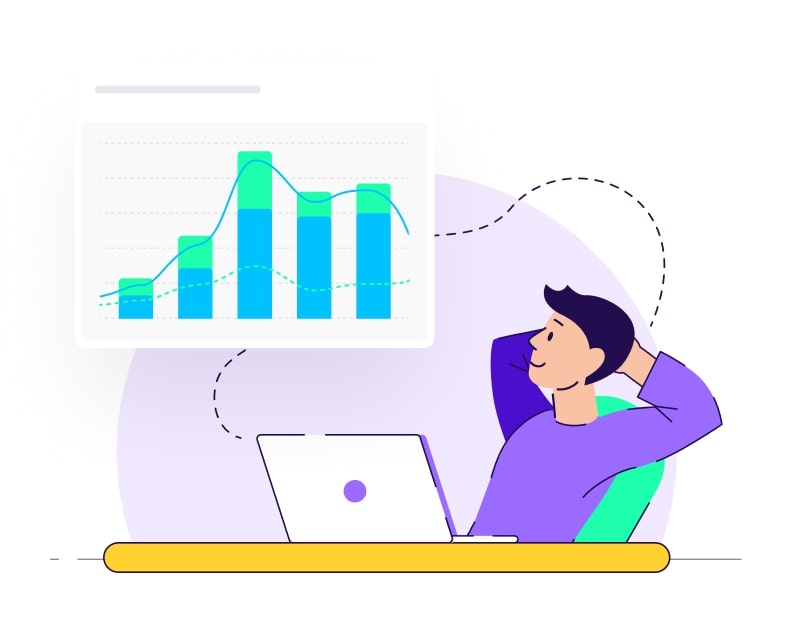
Tackle the attribution challenge
Another challenge is ad revenue attribution, which shows you which network originally brought the user. For example, a user acquisition (UA) campaign delivers a user that generated $2 in IAP, but they also generated $1 from viewing ads. The cumulative value of this user is $3.
Remember that in today’s privacy-centric, post-iOS 14 environment, developers have to use SKAdNetwork, Apple’s aggregated attribution mechanism, to measure their campaigns for non-consenting users. SKAdNetwork has several limitations that reduce both the quantity and quality of LTV and ROAS data.
Ultimately, user-level data is the richest form as it has information on the individual user. Make use of what user data you do have to inform strategy for your non-consenting users. For more information on attribution in the age of privacy check out this guide.

Chapter 4
In-app pricing models
As an advertiser, you can choose from a range of pricing models, each of which has its pros and cons. You’ll need to select the right monetization strategy for your app and campaign.
Cost per mille (CPM)
The CPM is the price an advertiser pays a publisher for every 1,000 (mille) times the ad is displayed.
CPM = (total campaign cost / number of impressions) x 1000
Pros: The price is low relative to other models.
Cons: There’s no guarantee that showing the ad will generate clicks or conversions.
Recommended when: Your goal is to increase your brand’s visibility.
Cost per click (CPC)

With the CPC pricing model, the advertiser pays the publisher only when an ad is clicked.
CPC = total campaign spend / number of clicks
Pros: As an advertiser, you only pay for a real signal of interest – in this case, a click.
Cons: Some clicks may be accidental, meaning you end up paying for something and receiving nothing in return.
Recommended when: Your goal is to drive traffic to your app, and you have a specific budget in mind.
Cost per action (CPA)
With the CPA pricing model, the advertiser pays the publisher when a click leads to a specific, pre-defined action within an app (like a registration or purchase).
CPA = total campaign spend / number of times the specified action was completed
Pros: CPA offers a low-risk, pure performance option when you have a specific action in mind.
Cons: It’s potentially difficult to scale and, while performance is important, you shouldn’t ignore additional factors such as brand awareness.
Recommended when: You have a specific action you want the user to perform, such as a purchase or registration.
Cost per install (CPI)
With CPI, the advertiser only pays the publisher when the action results in an install.
CPI = total campaign spend / number of app installs
Pros: If you have a niche audience, you only end up paying for those users who actually want your app.
Cons: CPI can’t tell you if a user is engaged with your app or keeps using it. Also, beware that lower-cost installs attract lower-value users and potentially, fraudulent installs.
Recommended when: Your goal is to increase the number of installs, or to promote and distribute apps across a broad audience.
Cost per view (CPV)

CPV is used for video ads, and means the advertiser only pays the publisher when a user watches their video for a set length of time.
CPV = total campaign cost / number of video views
Pros: It’s cost-effective, as you only pay when someone shows an interest in your video, rather than accidental views or fleeting glances.
Cons: Costs vary across platforms, and targeting a niche is generally more expensive. This means uninterested users could be letting your ads play and ignoring them – costing you money for nothing.
Recommended when: You want to build engagement or make sales, rather than just grow awareness.

Chapter 5
In-app ad formats
There’s a range of ad formats available depending on what you want to achieve.
Banner ads
Banner ads are probably the most familiar to users. They appear at the top or bottom of the screen, alongside the app content, and typically include a visual, text, and a call-to-action button.
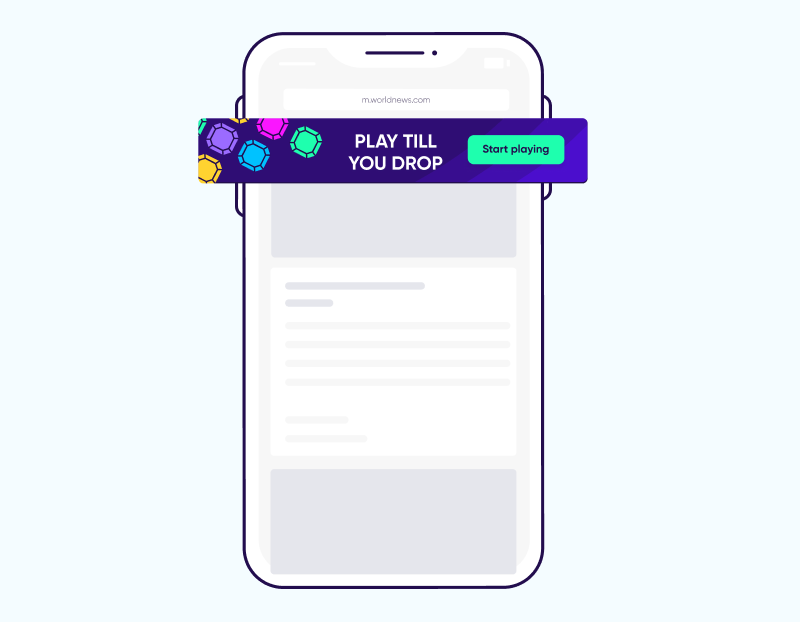
Video ads
Video ads are short video clips that appear before, during, or after another video (think: the ad before your chosen video starts on YouTube). They’re highly engaging and enjoy strong click-through rates.
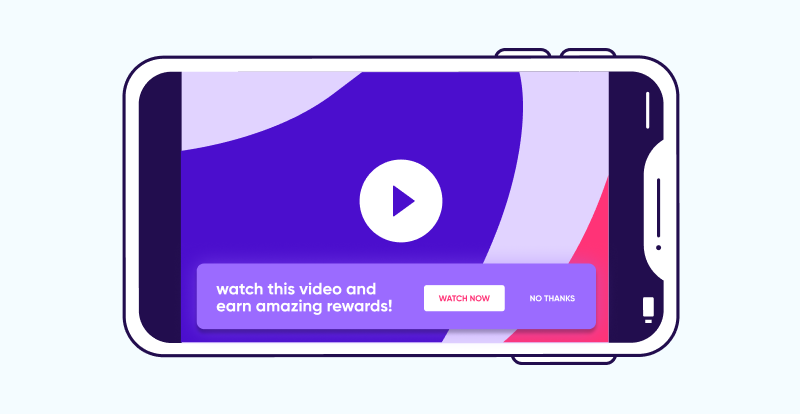
Rewarded video ads
These are often used in gaming apps and have a clear value exchange. You watch an ad, we’ll give you a reward. Rewarded videos can be good for user engagement, especially if the reward increases when you watch on consecutive days.

Interstitial ads
Interstitial ads (aka full-screen ads) usually appear during a transition in the app, for example between levels in a game. They’re rich forms of content and can be either static or video ads.
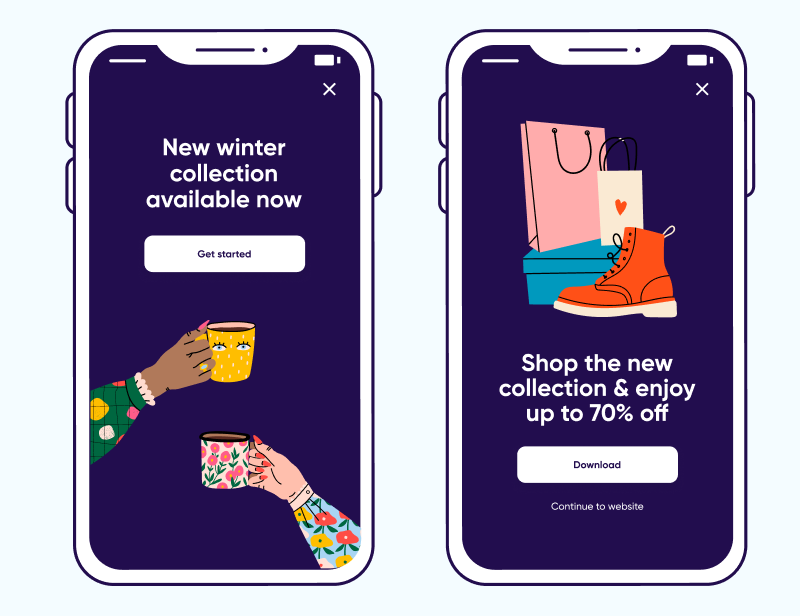
Native ads
Native ads appear in the regular flow of content, for example in a social network’s news feed, or in the form of an ad generated by a content recommendation engine and marked as sponsored content. Because they blend into the look and feel of the app, users often see them as more trustworthy.
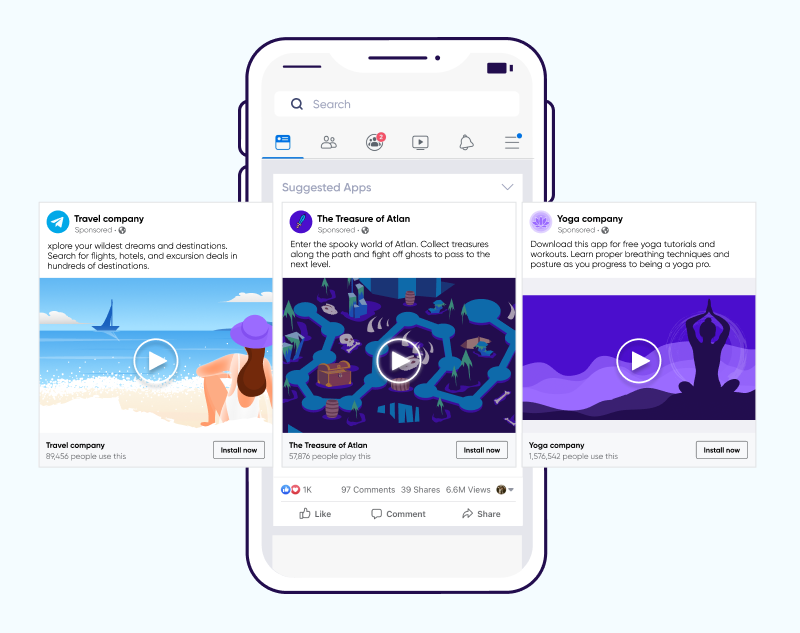
Playable ads
Playable ads give users the opportunity to “try before you buy” by playing a mini version of the game before they decide to install. They’re fun and interactive, which is why they demand some of the highest CPM rates for gaming apps.
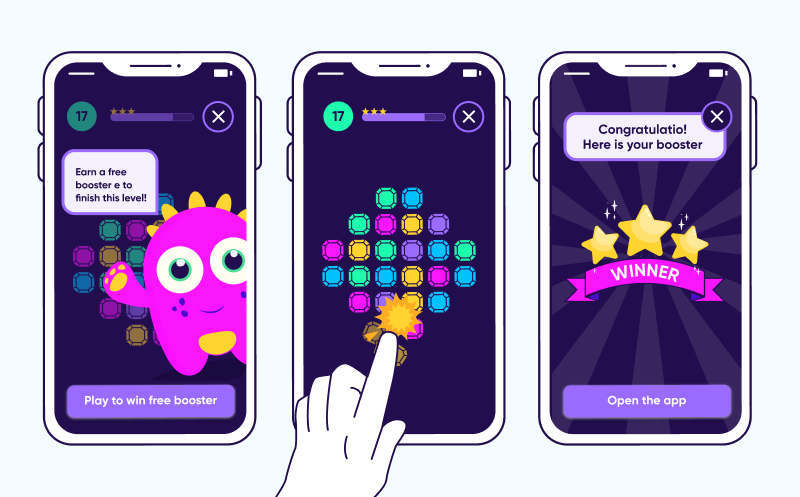
Offerwall ads
Similar to rewarded video, the offerwall ad is typically a page with a list of incentives. The user can select an offer, such as extra lives or in-app coins. These ads enjoy high engagement rates as they’re user initiated and can help to extend session time.
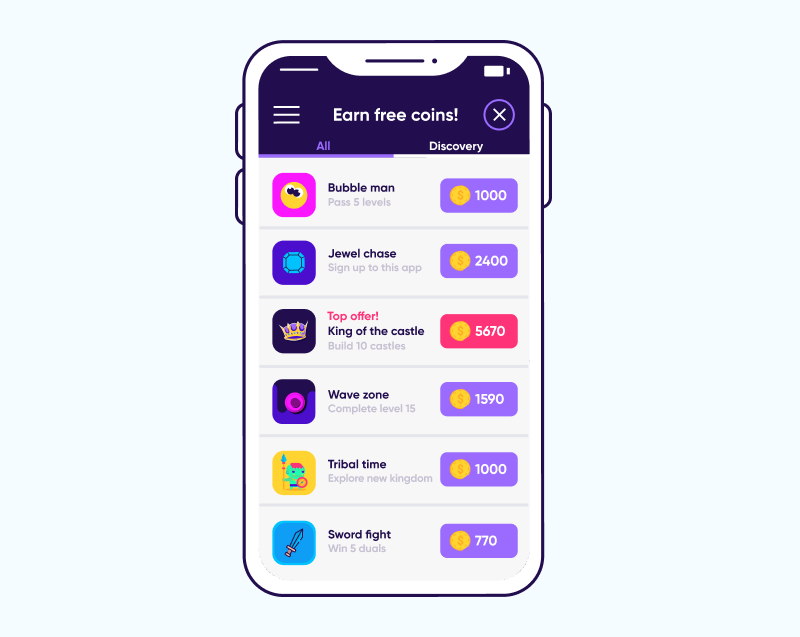

Chapter 6
7 best practices for in-app advertising
When it comes to IAA there are a number of tips and tricks to help drive success.
Test, test, test
Understanding what combination of factors delivers the best results is a delicate balance. The answer is to test, test, and test some more.
Test which ad format works best for each campaign. Test different pricing models and see which is most suitable for your app. Finally, experiment with different ad networks and see which ones deliver the highest CPMs.
Follow privacy guidelines
As consumer privacy concerns grow and regulations evolve, it’s vital to keep on top of the guidelines and ensure your app is working within the requirements.
Focus on the right users
If IAA is a key revenue stream for your app, then make sure your UA efforts target users based on how well they’ll monetize with advertising.
Invest in your creatives
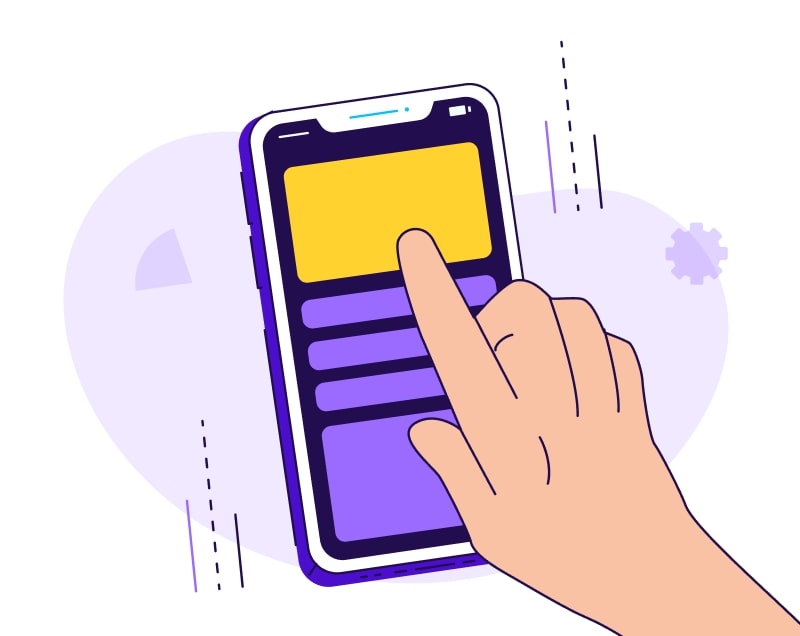
With so many competitors trying to grab users’ attention, eye-catching visuals and compelling copy are crucial for boosting awareness, engagement, and return. A/B testing is a great way to finetune your creative.
Check viewability
According to guidelines set by the Media Rating Council and Interactive Advertising Bureau, a mobile display ad impression is only considered viewable if:
- 50% or more of the pixels in the ad were in view, and
- the pixel requirement was met for at least one continuous second, post ad-render.
Without these two requirements your ad won’t “count”, so it’s crucial you test and make sure you’re meeting these thresholds.
Don’t over-advertise
By segmenting your audience correctly, you can divide users into those who have installed or purchased, and those who haven’t. Try to show ads to non-paying users instead of those who have converted.
Once a user has converted, be sure to shift your messaging to focus on re-engagement.
Think UX
Remember, marketing isn’t about you — it’s about your customers. Time your ads carefully, and make sure they enhance, not detract from, the user experience. For example, videos are fine if you’re watching video content anyway, but they’re intrusive if you’re trying to read. Similarly, too-frequent ads could turn users off your brand altogether.

Key takeaways
In-app advertising is a critical revenue stream for advertisers, especially in the freemium-dominated market. To capitalize on the benefits of IAA, remember that:
- In-app advertising can help you boost revenue, build engagement, increase purchases, and offer a positive experience to your ideal audience. Challenges include the competitive landscape and measurement difficulties, while fraudsters and ad blockers can hurt performance.
- Apps on the buy side request an ad via an ad network, which matches them with the highest-paying advertiser on the sell-side. Relevant ads are then served to the user in real time.
- Pricing models for IAA include CPM, CPC, CPA, CPI, and CPV. These compare your campaign cost with the desired outcome, and the right one will depend on your goals.
- In-app ad formats include banners, video, rewarded video, interstitials, playable ads, and offerwalls.
- Try out different ad formats to see which deliver the highest engagement. Invest in your creative, consider user experience, and don’t over-advertise as this may turn customers off.
- Stay alert to fraudulent activity, and ensure you’re operating within privacy guidelines as well as viewability standards.

